#history of argentina
Text

"Patricio Simonetto’s groundbreaking analysis offers lucid insights on the Argentinean trans experience and the complexities of engaging with a Latin American transgender and travesti archive. Centering trans issues and national discourses, Simonetto bravely engages the epistemic violence of the past as he documents the utopian aspirations and numerous achievements of the present. A Body of One’s Own is a major contribution."
53 notes
·
View notes
Text
It's kinda cute how Argentina just sorta reaches her hand out so she can have a border with Brasil 🥰
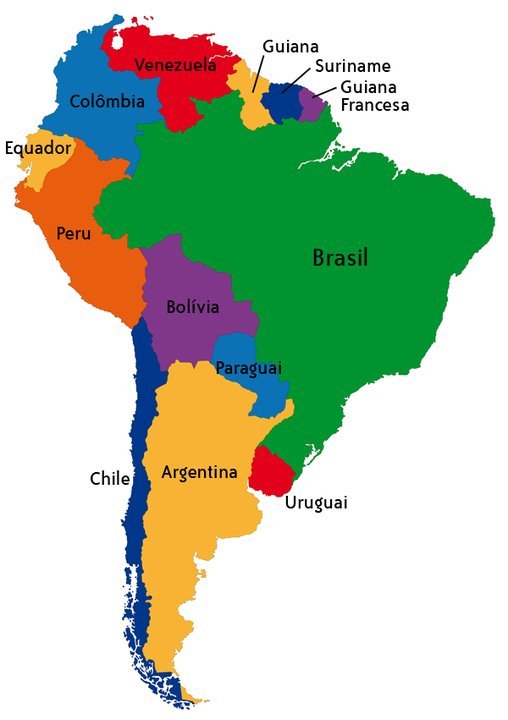
#no i do not know the history of how the borders got drawn exactly where they are#sorry if I'm ignoring a bloody massacre or something#brargentina#brasil#argentina#latam#ursal?#brarg
24K notes
·
View notes
Text
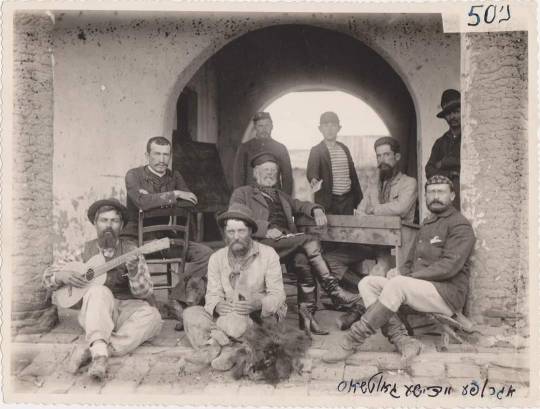
Yiddishe Gauchos, Argentina, early 20th century
At the end of the nineteenth century, thousands of East European Jews fled to Argentina from persecution and pogroms. These Jews became ranchers and farmers in the pampa, and were called Yiddishe (Jewish) Gauchos. The Yiddishe Gauchos, like their native counterparts, dressed in black hats and wide belts. They adapted the local customs, built communities and gave the pampa its own uniquely Jewish character.
906 notes
·
View notes
Text
Did you know that, when Latin American countries were becoming independent from Spain, 5 of their anthems were composed by Catalans?
In Argentina 🇦🇷, the government that resulted from the 1810 May Revolution chose an anthem composed by Blai Parera i Moret.
In Chile 🇨🇱, the anthem chosen in 1828 was composed by Ramon Carnicer i Batlle.
Mexico's 🇲🇽 1854 contest to choose a national anthem was won by Jaume Nunó i Roca.
When Panama 🇵🇦 became independent in 1904, they commissioned Albert Galimany i Pujol to compose their national anthem.
Puerto Rico 🇵🇷 adopted its current national anthem in 1952, choosing a song composed in 1867 by Fèlix Astol i Artés.
#música#arts#història#music#national anthems#anthems#argentina#chile#mexico#panama#puerto rico#catalonia#catalunya#music history#art history#other countries
95 notes
·
View notes
Text

Surrender of the General Dorrego Corvette by Edoardo de Martino
#edoardo de martino#eduardo de martino#art#age of sail#marine art#naval battle#brazil#argentina#brazilian#argentine#imperial#navy#south america#history#empire of brazil#imperial brazilian navy#armada imperial#cisplatine war#cisplatin war#general dorrego#la bertioga#rio da prata#ships#ship#naval warfare#naval battles#south american#sea#waves#royal navy
75 notes
·
View notes
Text

Some of the feminine spiritual apparitions in the folklore and legends of Latin America & the Caribbean
There are many types of female ghost. They are typically (but not always) dressed in a white or red dress or similar garment, reportedly seen in rural areas and associated with local legends of tragedy. Legends are found in many countries around the world. Common to many of these legends is an accidental death, murder, or suicide, and the theme of loss, betrayed by a husband or fiancé, and unrequited love. Many of these entities are also said to appear near water, like the Sirens of Greece or the washerwomen of the Celtic people.
#latin america#history#myth#mythology#legend#urban legend#scary#creepy#llorona#mexico#latinx#latino#latina#cuba#argentina#brasil#brazil#world#map#maps#chile#puerto rico#caribbean#jamaica#central america#el salvador#honduras#latinoamerica#folklore#demons
523 notes
·
View notes
Text

argentina v france | 18.12.22
739 notes
·
View notes
Text

Argentina history is fucking good
Aguante Rosita pá
#juan manuel de rosas#argentina#historia#history#historical#historical art#militar#military#fanart#historical man#argieblr#argieposting#argie tag#argieblog
93 notes
·
View notes
Text
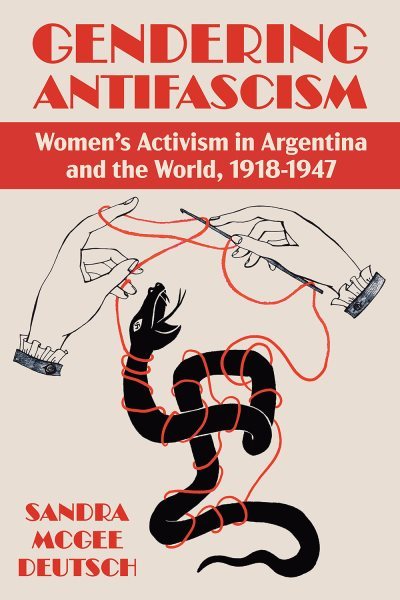
“A superb book on the only major Argentine antifascist association composed entirely of women. Attracting disenfranchised women, the Junta de la Victoria fostered a democratic alternative to fascism and politicized women in the Southern Cone. The contemporary resurgence of right-wing populist and neo-fascist groups in the Americas makes this meticulously researched study, of a relatively unknown organization of the 1940s, of particular relevance. Highly recommended.”
7 notes
·
View notes
Text
My grandpa was one of the last to work for La Forestal. They came to the Argentine Chaco to extract tannin from the quebracho tree. He tells me that every time a huge quebracho was cut down, it fell on the new little trees, not giving the forest time to grow back. A job from sun to sun, on lands stolen from the native peoples of the Chaco, who, along with criollos and immigrants, were also forced into gangs to cut down trees so hard that broke down axes, with trunks meters in diameter, to be pulverized in sweatshop factories and sent as tanin podwer to European industries. La Forestal did not pay you in pesos; you had a coin (my grandpa still has his, it says "Obrero N° 14"), which you presented at the company store, and they gave you whatever (food, booze) they cared to give you, or what they said they had; after all, as my grandfather says, if you didn't know how to read or write, how would you know you were getting less than they said?
And if you went on strike? And if you formed a union? And if you wanted to resist, like the indigenous peoples did? Some boys with a blood-red cap, the Cardenales, criminals taken from prison, would come and kill you, in broad daylight if you were striking, in the middle of the forest if you were alone. Many books tell about hacheros yelling one last long sapucai before killing themselves, because they couldn't stand it anymore.
Who were the owners of this terrible company? English. In the La Forestal HQ in the north of Santa Fe, a beautiful mansion (I understand that it is now a ruin) while the workers lived in mud huts with roofs of palm leaves, every day, the Union Jack was hoisted over Argentine soil, and of course, at five o'clock it was tea time, while all the tannin, loaded on barges and on railways worked by Argentines but owned by the British, went to Europe, and the wealth, of course, to London.
My grandfather lived through the last of this. Perón already came by that time, with worker's rights, unions, rural schools and clinics, the nationalization of railways... Nevertheless, he still had to hunt to eat and work from a young age at the machines of the company, as the company was leaving the country and couldn't even bother to pay a pittance to its workers. It eventually closed most of its operations and came into Argentine hands. But don't think it was because the English had a change of heart. They just found a better source of tannin, the acacias in their African colonies. God knows what crimes they committed there, if this is what they did in the territory of a 'sovereign' country.
And this is the side of the story I know. I cannot yet speak for all the territories the British owned in the Patagonia, some of which are still owned by English millionaries today. Don't come to tell me that the poor innocent English had nothing to do with the genocide that was done to the indigenous peoples in this country.
#cosas mias#argentina#imperialism#history#I can't believe you braindead pelotudos actually think the British Empire is an innocent entity who had no influence in South America#and did nothing wrong they just had some sheep in some islands! well.#let's not forget: they would also have owned the whole of Patagonia if they could#in fact they tried to take over Argentina before it was even independent#do you think we dislike them just because of football?
212 notes
·
View notes
Text
English: Every March 24, the National Day of Memory for Truth and Justice is commemorated in Argentina, as a way of remembering the victims of the last coup in Argentina, which began on March 24, 1976.
It lasted 2,818 days
20,000 factories closed
340 clandestine detention centers were created
external debt multiplied ×6
more than 200 banned songs and movies
over a 100 banned books, including children's books
increased poverty from 4,4% to 37.4%
30,000 people missing
more than 4,500 people were murdered and tortured in ways so disturbing that I cannot speak here
Español: Cada 24 de marzo se conmemora en Argentina el Día Nacional de la Memoria por la Verdad y la Justicia, como una forma de recordar a las víctimas del último golpe de estado en Argentina, iniciado el 24 de marzo de 1976.
Duró 2.818 días
20.000 fabricas cerraron
Se crearon 340 centros clandestinos de detención
Se prohibieron y censuraron más de 200 canciones y películas
más de 100 libros prohibidos, incluidos los de clasificación infantil
aumento de la pobreza del 4,4% al 37,4%
30.000 personas desaparecidas
más de 4500 personas fueron asesinadas y torturadas de formas tán perturbadoras que no puedo hablar aquí
#argentina#🇦🇷🇦🇷🇦🇷#march 24#dictadura#charly garcia#la noche de los lápices#tik tok#history#horror history#horror stories#horror#argentina🇦🇷#💔#pls reblog#argentina 1985#nunca más#verdad#justicia#justice#important#Spotify
340 notes
·
View notes
Text


Ancient Roman Temple Where Julius Caesar was Assassinated Opens in Rome
The square contains the remains of the Curia of Pompey, a central meeting place for senators where Caesar was stabbed to death on the Ides of March.
An ancient square where historians believe Julius Caesar was stabbed to death — one of the most infamous assassinations in history — was opened to the public for the first time Tuesday.
The Sacred Area of Largo Argentina, containing the remains of four ancient temples in a bustling part of downtown Rome, can now be seen up close via a lowered walkway for 5 euros ($5.50).
The site also contains the remains of the Curia of Pompey, a central meeting place for senators where it is believed Caesar was stabbed to death on March 15 (the Ides of March) in 44 B.C.
Successive generations had built on the site since ancient times, and it was only rediscovered when buildings were demolished in 1926. Three years later, another dictator, Mussolini, inaugurated it as an important historical site.
Two new exhibition areas also document the many archaeological finds at the site over the ages. The works were funded by the fashion house Bulgari and managed by the Capitoline Superintendency for Cultural Heritage.
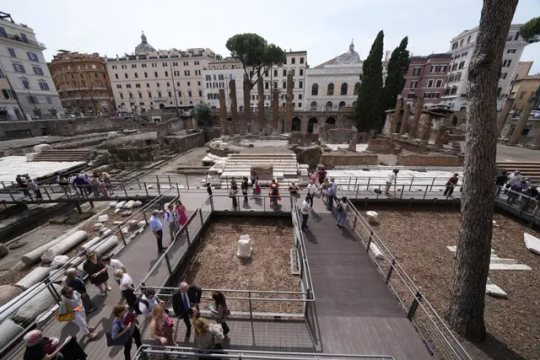
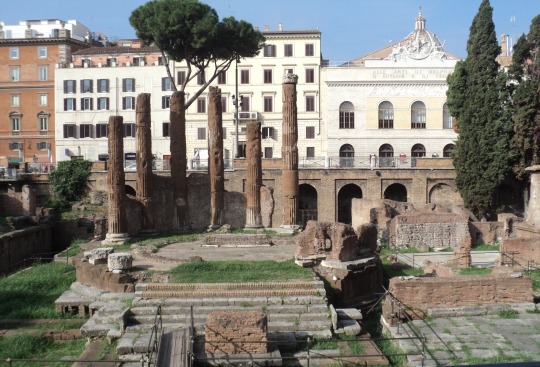

The site could previously only be seen from street level and had become overgrown with weeds. Tourists’ photos posted online show the area being enjoyed by stray cats — there is cat sanctuary on a corner of the square.
“One of the most beautiful and precious places in Rome is finally fully usable by Roman citizens and tourists, who from now on will be able to see from nearby wonderful archaeological finds from various periods of the history of our city,” Miguel Gotor, councilor for culture for the city of Rome, said in a news release.
The first recorded structure of importance on the site dates to the early third century with the construction of what is referred to as Temple C, probably dedicated to the Roman goddess Feronia.
Fires in 111 B.C. and A.D. 80 destroyed much of the earliest buildings, with those remains buried under a new floor built by the emperor Domitian in the first century.
Caesar's death has endured in Western culture as one of the most seismic political events in history, even as its details and wider implications continue to be debated.
In Shakespeare’s dramatic retelling, the dying dictator last words were “Et tu, Brute?” after he saw that his old friend Marcus Brutus, one of the murder conspiracy’s main ringleaders, was among his killers.
What is agreed upon is that Brutus and a group of Roman senators had grown concerned over the size of Caesar's power and influence and his undermining of the Republic.


However, Caesar's killing unleashed a period of reprisal and civil war that killed thousands and effectively killed the Republic. His named successor, his adopted 18-year-old son, Octavian, became what is regarded as Rome's first emperor in 27 B.C., known by then as Augustus.
Such is Italy's vast wealth of archaeological treasures that many important sites have yet to be excavated and thousands of found items have never been put on public display.
Historians' understanding of ancient Rome is still evolving as more items are found. In April a new study shed light on the use of Roman wineries in theatrical ceremonies, while in May archaeologists revealed how people were killed in an earthquake triggered by the immense eruption at Vesuvius in A.D. 79.
By Patrick Smith.
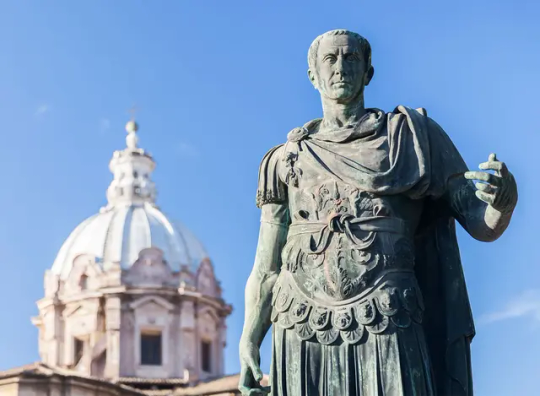



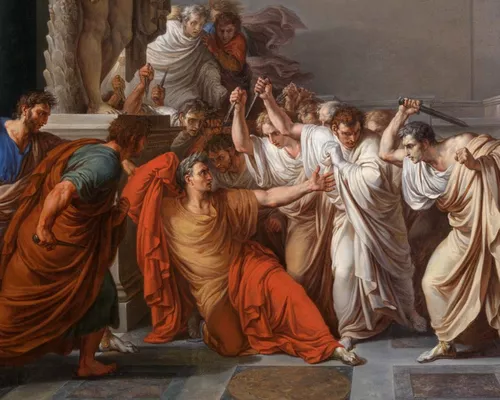
#Ancient Roman Temple Where Julius Caesar was Assassinated Opens in Rome#Curia of Pompey#The Sacred Area of Largo Argentina#Ides of March#ancient artifacts#archeology#archeolgst#history#history news#ancient history#ancient culture#ancient civilizations#ancient rome#roman history#roman empire#roman ruins#roman art
187 notes
·
View notes
Text
Messi drinking Fernet con coca at 11 am in cutted plastic bottles as cups, cumbia playing and Otamendi rolling a joint on the roofless bus that is going at 2km/h bc of 4 fucking million happy people collapsing Buenos Aires and the highway system... Argentina te amo. Te amo.
You can take away the boys from their land but never the land from the boys.
The world is watching and our team is getting drunk and high at 11 am while the People cheer, mythical heroes coming back home.
#en ingles para la genteeee#argentina#argentina nt#qatar 2022#i promised that it would be my last copaposting but nah i lie we are living history#i am not there bc i fucked up my leg from jumping like crazy on sunday with 2.5 million people#4 millones de personas felices. por favor cuidense qu2 quiero que le cerremos el orto al gorilaje amargo
504 notes
·
View notes
Text


#argentina#palestine#gaza#from the river to the sea palestine will be free#freepalastine🇵🇸#free palestine#social justice#current events#history#history posting#gaza strip#gaza genocide#gazaunderfire#gazaunderattack#save gaza#stand with gaza#free gaza#israel#israeli war crimes#israel occupation#history tumblr#israel is a terrorist state#human rights#israel is committing genocide#i stand with palestine#i stand with gaza#israel is an apartheid state#israel war crimes#anti zionisim#fuck israel
53 notes
·
View notes
Text
137 notes
·
View notes
Text

March 24: National Day of Memory for truth and justice
Today is the day in Argentina to commemorate the victims of the last military dictatorship, self-styled "National Reorganization Process", which usurped the government of the Argentine national state between March 24, 1976 and December 10, 1983. The date highlights the importance of democratic continuity, which in 2023 will be 40 years old.
April 1977, when 14 women gathered for the first time in front of the Casa Rosada to demand information about their sons and daughters who had been kidnapped. They are remembered to this day as the Mothers and Grandmothers of Plaza de Mayo.
In times of cloth diapers, the mothers kept the ones their now disappeared children had worn and decided that they would wear them on their heads to recognize themselves in the crowd, becoming their national symbol.
With the restoration of democracy, in December 1983, President Raúl Alfonsín issued the Decree that would later trigger the well-known "THE JUNTAS TRIAL"
This was the first condemnation of State terrorism in Argentina, at the level of the Nuremberg trials, setting a precedent in the continent in view of the horrors experienced.
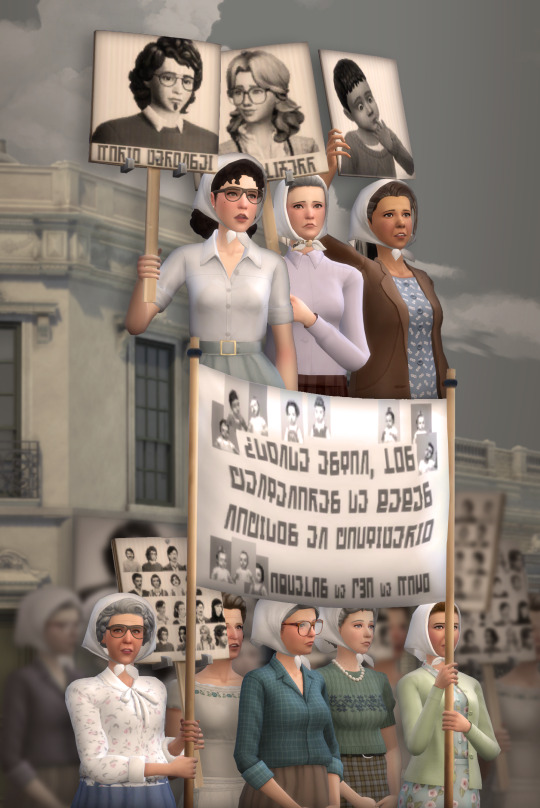

This is a recent history in the country, our FATHERS, MEN OF 60 YEARS OF AGE went through it, their generation includes the thousands of people who are with us and carry the physical and mental torture of what they suffered.
There are many movies that deal with the themes of these dates:
La noche de los lapices (1986)
La historia oficial (1985) (With an Oscar)
Buenos Aires viceversa (1996)
Argentina 1985 (2022) (With an Oscar nomination)
For those who are here and those who are no longer here, we ask for memory, truth and justice.
#ts4#ts4 edit#ts4 memory day#ts4 argentina#ts4 history#ts4 70s#ts4 80s#Nunca Mas#Arg 1985#argentina 1985#La historia Oficial
310 notes
·
View notes